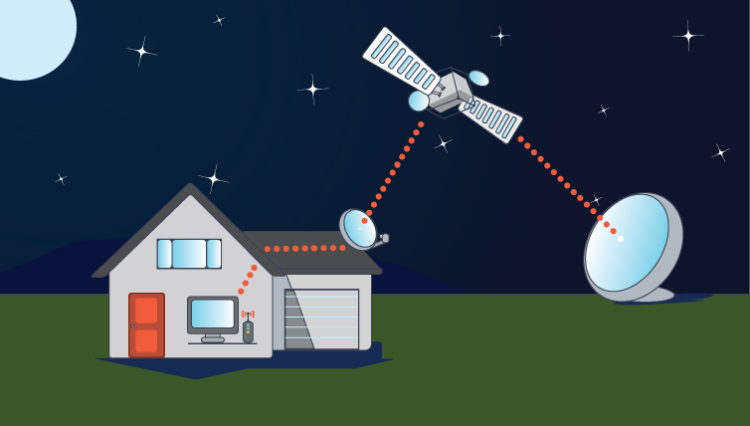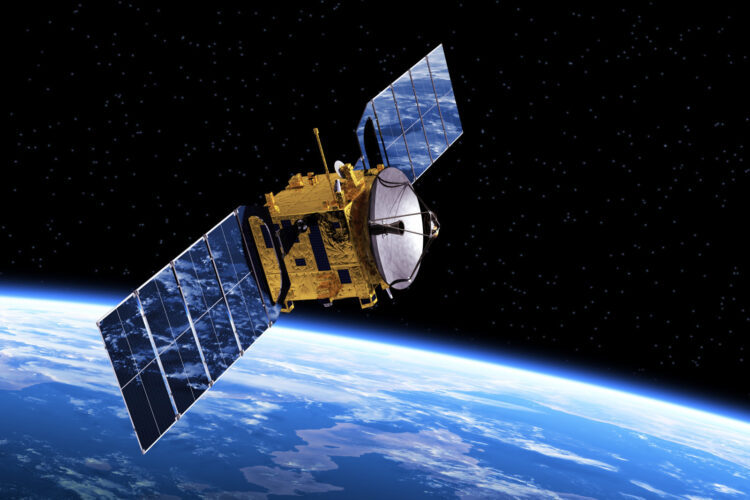Satellite Internet is a type of broadband Internet access that allows you to connect a computer or local area network to the Internet through a satellite radio connection. It is most commonly used in regions where traditional terrestrial Internet services (DSL, Cable) are not available, as well as users who frequently switch locations, including ships and terrestrial vehicles. It requires specialized equipment (router and antenna) that transmits or receives satellite radio signals as well as communication with the satellite Internet service provider.
1. It works on the places where other types don’t

There are some occasions when the terrestrial internet access is limited or impossible due to various reasons. In this case, satellite internet represents a perfect essential type of network in the event that you live in a remote area. Sometimes when it takes weeks, once in a while months, to get an earthbound broadband connection introduced this could be a quite good resolution for the problem. If the satellite is located in geostationary orbit, you should be able to receive the signal anywhere in the world, and that’s what makes this option more advanced compared to other types of the internet. It’s rather useful when traveling to some rural areas or any other part of the world where the word “internet” means something which is more than hard to reach. This also means easy mobility, since it’s a great option when you need to move or simply relocate your device. That’s why for travelers, satellite options for internet and phones (see here) are preferred.
2. The usage is quite easy

The whole process of satellite internet is rather easy: the first thing you need to do is create an account that is set up by a technician as well as a dish that is placed outside your house. The satellite mostly communicates with the dish, but sometimes it can also communicate with gateways. Those are little ground stations that are supposed to receive the radio signals. The good thing is that this kind of system doesn’t depend on any kind of cables or phone lines, which means that the dish would be enough for you to establish a proper Internet service. Once it’s installed, you’ll be able to use your internet without any interference. You just need to make sure that there are no obstacles between the dish and the satellite itself since that could make a problem regarding connectivity.
3. It’s faster than dial-up

In case you are situated somewhere where you don’t have many options regarding the internet connection choice, anything that works fine would be useful for you. Compared to dial-up which can be extremely slow and frustrating sometimes, satellite internet represents a good alternative for those who want something more convenient and faster. This is mostly visible when we compare the download speed. According to some researches that were carried out, it seems that satellite internet download speed is eight or nine times faster, which truly shows the progress. One more thing which makes it better than dial-up is the fact that you can actually use it on other devices as well, not only on the computer, like we used to do in the old good times. There are no challenges regarding interruptions – and that’s a big plus – and there’s no need to dial every time we want to use the internet.
4. It’s persistent.
Since satellite web has less gear on the ground unlike terrestrial internet services, the system is less inclined to get damaged during some intense weather conditions and other similar occasions. This implies that the system would experience bugs less frequently and be reestablished rapidly if something gets broken — even when nearby system is still experiencing issues. If there are disasters like floods or other similar happenings, it won’t affect the connection as it will remain the way it was, regardless of those factors.
5. It’s secure.

The satellite web offers a superior assurance of security and unwavering quality contrasted with ADSL in light of the fact that the connection rarely gets interrupted or usurped in any other way. It uses some encryption units and also VSAT sides. Also, it’s much more difficult to intercept the beam between the dish and the satellite than to do the same with the signal in a cable. For its security, this type of internet is a mitigating factor for mobile banking and other transactions, while maintaining ATMs wirelessly as well.
6. It’s cost-effective
As in any innovation arrangement, the cost identified with the satellite web comes in two primary classifications: the establishment cost, and the running expenses. The development of the technology and the utilization of the Ka-band made the service savvier for business, by diminishing the expense of the equipment which was utilized, just as the membership charges, which takes into account a fast quantifiable profit. So, we could say this option is actually quite budget-friendly since there are no other additional fees except the ones that you already know about. And that’s the thing we wouldn’t be able to say for other internet providers and types.
7. There are plenty of good providers

Considering the fact that the satellite internet became quite popular due to its benefits, it is logical that with each passing day there are more and more companies offering rather tempting subscriptions. Working with a provider which possesses the right assets and encounters in the field, is a key achievement factor to work and keep up a satellite web arrangement. Some websites like HughesNet have so many options that it’s actually a pure pleasure exploring and finally making the decision to purchase one of the packages. On provider’s websites, you can also notice some reviews that other clients left which could probably be helpful. Satellite Web providers also offer various packages that commonly consolidate a set amount of emails in order to prevent the issue with your PC safety. These offers have diverse download and upload speeds and what meets your requirements is controlled by your expected PC usage whether you’ll be mostly checking your email messages, searching on the web or downloading music and recordings.
 Hi Boox Popular Magazine 2024
Hi Boox Popular Magazine 2024



